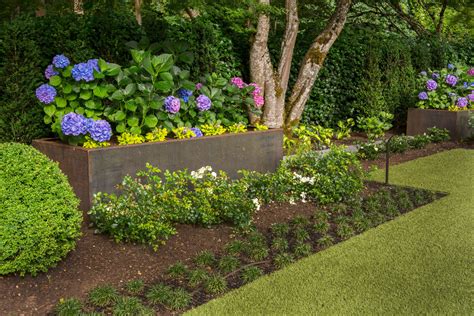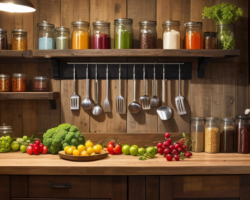Choosing native plants to conserve water
Choosing native plants to conserve water is an excellent way to create a beautiful and sustainable garden. Native plants are adapted to the specific climate and soil conditions of your region, making them more resilient and requiring less maintenance. By incorporating native plants into your garden, you can reduce the need for excessive watering, ultimately conserving water resources and promoting environmental sustainability.
One of the key benefits of choosing native plants is their low water requirements. These plants have evolved to survive in their natural habitat where water resources may be limited. They have developed deep root systems that are efficient at extracting water from the soil, allowing them to withstand drought conditions. This means that native plants typically need less irrigation once established, reducing the amount of water used in your garden.
In addition to their water-saving benefits, native plants also provide numerous ecological advantages. They promote biodiversity by attracting and supporting local wildlife, including birds, butterflies, and beneficial insects. These plants offer food, nesting sites, and shelter for various species, creating a thriving habitat for wildlife in your garden.
- Native plants require less water due to their deep root systems.
- They are adapted to local climate and soil conditions.
- They promote biodiversity and attract wildlife.
- Native plants are low-maintenance and resilient.
| Plant Name | Water Requirements | Sun Exposure |
|---|---|---|
| California Poppy | Low | Full Sun |
| Lavender | Low | Full Sun |
| Manzanita | Low | Full Sun |
| Toyon | Low | Full Sun, Partial Shade |
When selecting native plants for your garden, consider their water requirements and sun exposure needs. Some native species, such as the California Poppy, Lavender, Manzanita, and Toyon, have low water requirements and thrive in full sun. These plants are excellent choices for water conservation and can add beauty and color to your landscape.
By opting for native plants, you can create a sustainable and water-wise garden that supports the local environment. Not only will you conserve water, but you’ll also contribute to the overall health and resilience of your garden ecosystem. So go ahead and choose native plants for a green and thriving garden!
Implementing a rainwater harvesting system
Rainwater harvesting is an eco-friendly method of collecting and storing rainwater for various uses. By implementing a rainwater harvesting system, you can reduce your reliance on the municipal water supply and contribute to water conservation efforts. This system involves the collection, filtration, and storage of rainwater for later use in your household, garden, or other applications.
One of the key benefits of implementing a rainwater harvesting system is the significant reduction in water bills. Instead of relying solely on the municipal supply, you can utilize the free and abundant rainwater that falls on your property. This can lead to substantial cost savings in the long run, particularly in areas where water prices are high.
Another advantage of rainwater harvesting is its positive impact on the environment. By capturing rainwater, you can decrease stormwater runoff, which can carry pollutants and cause erosion. Additionally, rainwater is naturally soft and lacks harmful chemicals such as chlorine, making it healthier for plants and soil.
- Water conservation: Implementing a rainwater harvesting system helps conserve water by utilizing a free and renewable resource.
- Cost savings: By reducing reliance on the municipal water supply, you can save money on water bills over time.
- Environmental benefits: Rainwater harvesting reduces stormwater runoff and provides chemical-free water for plants and soil.
| Components of a Rainwater Harvesting System | Functions |
|---|---|
| Rooftop Catchment | Collects rainwater from rooftops using gutters and downspouts. |
| Leaf Guard/Filters | Prevents debris and leaves from entering the system, improving water quality. |
| Storage Tanks | Stores the collected rainwater for later use. |
| Pump and Distribution System | Transfers the harvested rainwater to various applications. |
When implementing a rainwater harvesting system, it’s important to consider the local regulations and guidelines. Some areas may have restrictions on the collection and use of rainwater, so familiarize yourself with the rules before proceeding. Additionally, the size of your property, the amount of rainfall in your area, and the intended use of the harvested water will dictate the design and components of your system.
In conclusion, implementing a rainwater harvesting system offers numerous benefits in terms of water conservation, cost savings, and environmental sustainability. By utilizing rainwater for various purposes, you can reduce your environmental footprint and contribute to a more sustainable future.
Using organic fertilizers for healthy soil
When it comes to maintaining a healthy garden, one of the key factors to consider is the quality of the soil. Good soil provides the essential nutrients and minerals that plants need to grow strong and produce bountiful harvests. One way to improve the health of your soil is by using organic fertilizers. Organic fertilizers, as opposed to synthetic ones, are derived from natural sources such as compost, manure, and bone meal. They not only provide a wide range of nutrients but also improve the structure and fertility of the soil. In this article, we will explore the benefits of using organic fertilizers and how to choose the best ones for your garden.
Using organic fertilizers offers a plethora of benefits for both your plants and the environment. Firstly, they release nutrients slowly over time, providing a steady supply of nourishment to plants. This is in contrast to synthetic fertilizers, which often deliver a quick burst of nutrients but can be harmful in excess. Organic fertilizers also improve the soil structure, allowing for better drainage and aeration. They encourage the growth of beneficial microorganisms, earthworms, and other soil organisms that help break down organic matter and make nutrients more available to plants.
When choosing organic fertilizers, it is important to consider the specific needs of your plants. Different plants have different nutrient requirements, so it’s crucial to choose a fertilizer that matches those needs. For example, nitrogen is essential for leafy green vegetables, while phosphorus is important for root development and fruit production. Before buying an organic fertilizer, check the nutrient content listed on the packaging. Look for a balanced blend of nutrients, such as a 4-4-4 or 10-10-10 ratio, which indicates the proportion of nitrogen, phosphorus, and potassium respectively.
- Compost: Compost is a versatile organic fertilizer that can be made at home by recycling kitchen scraps, yard waste, and other organic materials. It is rich in nutrients and adds organic matter to the soil, improving its fertility.
- Manure: Animal manure, such as cow, horse, or chicken manure, is another excellent source of organic fertilizer. It is high in nitrogen, phosphorus, and potassium, and helps improve soil structure.
- Bone meal: Made from finely ground animal bones, bone meal is a slow-release fertilizer that is particularly rich in phosphorus. It is ideal for promoting root development and flowering in plants.
In addition to these natural fertilizers, there are also organic fertilizer blends available in garden centers and online. These blends combine a variety of organic materials to provide a balanced mix of macro and micronutrients. Some popular blends include fish emulsion, seaweed extract, and compost tea.
| Organic Fertilizer | Main Nutrients | Benefits |
|---|---|---|
| Compost | Nitrogen, Phosphorus, Potassium | Improves soil fertility, adds organic matter |
| Manure | Nitrogen, Phosphorus, Potassium | Enhances soil structure, boosts nutrient levels |
| Bone meal | Phosphorus, Calcium | Promotes root development, enhances flowering |
By using organic fertilizers, you can promote healthy soil and achieve lush, thriving plants in your garden. Remember to apply fertilizers according to the manufacturer’s instructions and avoid overuse, as excessive nutrients can be detrimental to plants. Organic fertilizers are not only effective but also environmentally friendly, reducing the risk of water pollution and minimizing harm to beneficial organisms. So, why not give organic fertilizers a try and see the difference they can make in your garden?
Installing solar-powered garden lights
Installing solar-powered garden lights is a great way to enhance the beauty and functionality of your outdoor space while also being eco-friendly. Solar-powered lights are powered by the sun’s energy, eliminating the need for electrical wiring or batteries. They are easy to install and provide soft, ambient lighting that adds a magical touch to your garden at night. In this article, we will discuss the benefits of solar-powered garden lights and provide tips on how to choose the right lights for your specific needs.
One of the main advantages of solar-powered garden lights is their energy efficiency. These lights rely on photovoltaic cells to convert sunlight into electricity, which is then stored in rechargeable batteries. This means that during the day, the solar panels collect and store energy from the sun, and at night, the batteries power the lights. Since they do not require electricity from the grid, solar-powered lights help to reduce carbon emissions and decrease your dependence on non-renewable energy sources.
Another benefit of solar-powered garden lights is their versatility and ease of installation. Unlike traditional wired lights, solar-powered lights do not require any electrical wiring. This means that you can easily install them yourself without the need for an electrician. Simply choose a sunny spot in your garden, stake the lights into the ground, and you’re done! You can also easily reposition the lights as needed to accommodate changes in your garden layout or to highlight different areas of interest.
- Solar-powered garden lights are cost-effective in the long run, as they do not require electricity from the grid.
- They are easy to install and do not require any electrical wiring.
- Solar-powered lights are low maintenance and can last for several years with minimal upkeep.
- They come in a variety of styles, shapes, and colors to suit your personal taste and garden design.
- Solar-powered lights are environmentally friendly and help to reduce carbon emissions.
When choosing solar-powered garden lights, there are a few key factors to consider. Firstly, assess the amount of sunlight your garden receives throughout the day. Solar-powered lights need direct sunlight to charge effectively, so if your garden is shaded for most of the day, they may not be the best option for you. Additionally, consider the type of light you want to achieve. Soft, warm white lights create a cozy atmosphere, while bright white lights are perfect for accentuating specific features or pathways.
| Pros | Cons |
|---|---|
| Saves energy and lowers electricity bills | Dependent on sunlight availability |
| Easy installation and flexibility | May not provide as bright of light compared to wired options |
| Low maintenance and long lifespan | Initial cost may be higher than traditional lights |
In conclusion, installing solar-powered garden lights is a sustainable and practical way to illuminate your outdoor space. With their energy efficiency, ease of installation, and low maintenance requirements, they are an excellent choice for environmentally conscious gardeners. By harnessing the power of the sun, you can create a beautiful and inviting atmosphere in your garden while minimizing your carbon footprint. So go ahead and add a touch of magic to your outdoor oasis with solar-powered garden lights!
Creating a composting area for organic waste
Creating a composting area for organic waste is an excellent way to reduce waste and nourish your garden. Composting involves the decomposition of organic materials such as fruit and vegetable scraps, yard waste, and coffee grounds, which eventually turn into nutrient-rich compost that can be used as a natural fertilizer for plants. By creating a composting area in your garden, you can contribute to a more sustainable and eco-friendly environment.
There are several key steps to follow when setting up a composting area. Firstly, choose a suitable location in your garden that is well-drained and receives partial sunlight. This will help facilitate the decomposition process. Next, gather the necessary materials, including a compost bin or designated area with wooden pallets, twigs or leaves to provide airflow, and a cover to keep pests and animals out. It is also important to have a balance of green and brown materials. Green materials include grass clippings and vegetable scraps, while brown materials consist of dry leaves and shredded paper.
Once you have set up your composting area, it is crucial to maintain the right conditions for decomposition. Turn the compost regularly using a pitchfork or shovel to aerate it and speed up the process. The ideal moisture level for a successful compost heap is similar to that of a damp sponge. If the pile becomes too dry, add water, and if it becomes too wet, add more dry materials. It is also important to monitor the temperature of the compost regularly. A well-maintained compost pile will produce heat as microorganisms break down the organic matter.
- Choosing organic waste to compost
- Setting up a designated composting area
- Maintaining the right balance of green and brown materials
- Aerating and monitoring the compost pile
- Utilizing the nutrient-rich compost in your garden
| Green Materials | Brown Materials |
|---|---|
| Grass clippings | Dry leaves |
| Vegetable scraps | Shredded paper |
| Tea bags | Twigs |
| Coffee grounds | Straw |
In conclusion, creating a composting area for organic waste is a simple and effective way to both reduce waste and enrich your garden soil. By following the proper steps and maintaining the right conditions, you can turn kitchen scraps and yard waste into a valuable resource. Remember to choose the right materials, set up a suitable composting area, and regularly monitor and aerate the compost pile. Before long, you will have nutrient-rich compost to feed your plants and promote a healthier, more sustainable garden.
Reducing water usage with drip irrigation
Drip irrigation is a highly efficient method of watering plants that helps to reduce water usage and conserve this valuable resource. This irrigation system delivers water directly to the roots of plants, minimizing evaporation and runoff. By using drip irrigation, gardeners can ensure that plants receive the necessary amount of water without wasting any. This not only helps to conserve water, but also promotes healthier plant growth and prevents water-related diseases. Now let’s explore some key benefits of drip irrigation and learn how to implement it in your garden.
Benefits of Drip Irrigation:
- Water Conservation: Drip irrigation significantly reduces water waste by delivering water directly to plant roots, avoiding evaporation and runoff.
- Healthy Plant Growth: With drip irrigation, plants receive a consistent supply of water and nutrients, promoting better root development and overall growth.
- Weed Control: By targeting water directly to the plants, drip irrigation limits water availability for weeds, helping to suppress their growth.
- Time and Energy Efficiency: Drip irrigation systems are automated and require less time and effort compared to traditional watering methods, saving you valuable resources.
Implementing Drip Irrigation in Your Garden:
To start using drip irrigation in your garden, follow these simple steps:
| Step | Description |
|---|---|
| 1 | Plan Your System |
| 2 | Choose the Right Components |
| 3 | Prepare the Area |
| 4 | Install the System |
| 5 | Monitor and Adjust |
By following these steps and considering factors such as the water needs of your plants, soil type, and climate, you can successfully implement drip irrigation in your garden and make a positive impact on water conservation.
Remember, it’s important to regularly maintain and check your drip irrigation system to ensure optimal performance and prevent any leaks or clogs. By reducing water usage with drip irrigation, you can contribute to a more sustainable garden while still enjoying beautiful and healthy plants.
Attracting beneficial insects for natural pest control
Attracting beneficial insects for natural pest control is a great way to maintain a healthy garden without the use of harmful pesticides. Beneficial insects are those that feed on garden pests, such as aphids, caterpillars, and mites. By creating a welcoming environment for these helpful bugs, you can reduce the need for chemical interventions and promote a more balanced ecosystem in your garden.
One effective way to attract beneficial insects is by choosing the right plants. Native plants are particularly attractive to beneficial insects as they have evolved together and provide the necessary food and shelter these insects need. When selecting native plants, look for ones with small, clustered flowers that offer nectar and pollen as food sources. Some examples of such plants are daisies, marigolds, and sunflowers.
In addition to native plants, having a diverse range of flowers in bloom throughout the growing season is important. This ensures a continuous food supply for beneficial insects. Consider planting a mixture of early, mid-season, and late blooming varieties. This will attract a wider range of beneficial insects and provide food throughout the entire gardening season.
Another way to attract beneficial insects is by providing habitat and shelter. Many beneficial insects need areas to hide, overwinter, and lay eggs. You can create shelter by leaving patches of bare soil, leaving grasses and leaf litter in certain areas, or even building simple insect hotels. These structures can be made with materials like bamboo, logs, and straw. They provide places for beneficial insects to rest and reproduce.
In summary, attracting beneficial insects for natural pest control is an effective and eco-friendly way to maintain a healthy garden. By choosing the right plants, providing a diverse range of flowers, and offering shelter and habitat, you can create an inviting environment for these helpful bugs. Not only will they control pests naturally, but they will also contribute to a more balanced and sustainable garden ecosystem.
- Choose native plants with small, clustered flowers for nectar and pollen.
- Plant a diverse range of flowers that bloom at different times throughout the season.
- Create shelter and habitat for beneficial insects by leaving bare soil, grasses, and leaf litter or building insect hotels.
| Beneficial Insect | Favorite Prey |
|---|---|
| Ladybugs | Aphids, mites, and small insects |
| Lacewings | Aphids, mites, and small insects |
| Hoverflies | Aphids, thrips, and small insects |
| Parasitic wasps | Various caterpillars and beetle larvae |
Creating habitat for wildlife in your garden
Creating habitat for wildlife in your garden is not only beneficial for the environment, but it also adds beauty and interest to your outdoor space. By providing a variety of plants, water sources, and shelter options, you can attract a wide range of wildlife, including birds, butterflies, bees, and beneficial insects. Here are some tips to help you create a wildlife-friendly garden that will support the local ecosystem.
1. Choose native plants: Native plants are adapted to the local climate and soil conditions, making them more resilient and attractive to native wildlife. Include a mix of trees, shrubs, and flowers that provide food, nectar, and shelter for different species.
2. Create a water feature: Adding a bird bath, pond, or small water fountain can provide a vital water source for wildlife, especially during hot and dry periods. Make sure to keep the water clean and fresh, and consider adding rocks or floating plants for additional habitat.
3. Provide shelter: Wildlife need shelter for protection from predators, as well as for nesting and roosting. Incorporate features such as bird boxes, bat boxes, and insect hotels to provide various types of shelter for different species. Adding brush piles or leaving fallen logs and leaf litter can also create hiding spots for small animals.
4. Avoid pesticides: Chemical pesticides can harm wildlife, including beneficial insects and pollinators. Try to minimize or eliminate the use of pesticides in your garden and instead focus on natural pest control methods such as planting companion plants and attracting insect-eating birds.
5. Plant for all seasons: To attract a diverse range of wildlife throughout the year, choose plants that bloom or produce fruits at different times. This will provide a continuous source of food and nectar, ensuring that wildlife will visit your garden regularly.
6. Maintain a healthy garden: Proper garden maintenance, including regular watering, pruning, and weeding, is essential for creating a wildlife-friendly habitat. Remove invasive plants that can crowd out native species, and mulch around plants to conserve moisture and enhance soil health.
| Attract | Plants | Wildlife |
|---|---|---|
| Birds | Native trees such as oak, maple, and birch; shrubs like holly and spicebush | Birdhouses, feeders, birdbaths |
| Butterflies | Milkweed, butterfly weed, coneflowers, asters | Nectar-rich flowers, larval host plants |
| Bees | Lavender, borage, sunflowers, bee balm | Unsprayed flowers, shallow water sources |
| Bats | Night-blooming flowers like evening primrose and moonflowers; fruit trees | Bat boxes, water sources |
By following these guidelines, you can transform your garden into a vibrant and thriving habitat for wildlife. Not only will you enjoy the beauty of nature up close, but you will also contribute to the conservation of local biodiversity. So, roll up your sleeves, grab a shovel, and start creating your own wildlife oasis!
Frequently Asked Questions
1. How do native plants conserve water?
Native plants have adapted to the local climate and soil conditions, requiring less water compared to non-native plants. Their deep root systems can access water deeper in the soil, reducing the need for watering.
2. How can I implement a rainwater harvesting system?
You can install rain barrels or a cistern to collect rainwater from your roof. This water can then be used for watering your garden, reducing the need for municipal water and conserving water resources.
3. What are the benefits of using organic fertilizers for healthy soil?
Organic fertilizers enrich the soil with nutrients in a slow-release manner, improving soil structure, water retention, and nutrient availability. They also promote beneficial microbial activity and reduce the risk of harmful chemical runoff.
4. How can solar-powered garden lights help conserve energy?
Solar-powered garden lights use renewable energy from the sun to operate, eliminating the need for electricity. This reduces energy consumption and lowers your carbon footprint, contributing to a more sustainable garden.
5. How do I create a composting area for organic waste?
You can designate a composting area in your garden where you can compost fruit and vegetable scraps, fallen leaves, and yard trimmings. By composting these organic materials, you can produce nutrient-rich compost to enrich your soil.
6. What is drip irrigation and how does it conserve water?
Drip irrigation is a method of watering plants by delivering a slow and steady drip of water directly to the plant’s root zone. This targeted irrigation reduces water evaporation and runoff, ensuring that plants receive water efficiently and conserving water resources.
7. How can I attract beneficial insects for natural pest control?
You can attract beneficial insects by planting flowers that provide food and shelter for them. For example, planting nectar-rich flowers will attract pollinators like bees and butterflies, which also help control pests by feeding on them.
8. How can I create habitat for wildlife in my garden?
You can create habitat for wildlife by incorporating features like bird feeders, birdhouses, and butterfly gardens. Providing water sources, like a birdbath or small pond, and planting native trees and shrubs also attract various wildlife species to your garden.





